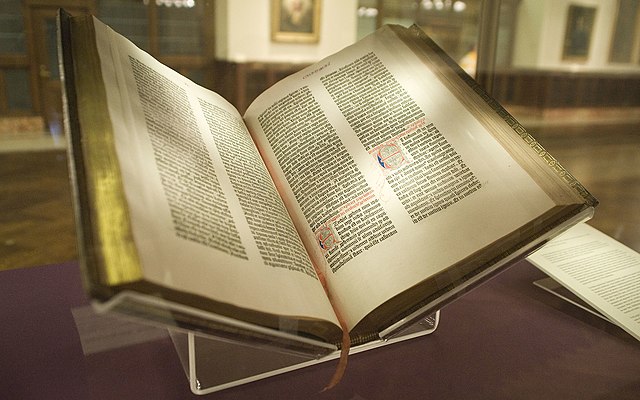Gutenberg Bible
early book printed with movable type From Wikipedia, the free encyclopedia
The Gutenberg Bible (also known as the 42-line Bible or the Mazarin Bible) is a printed version of the Latin Vulgate translation of the Bible that was printed by Johannes Gutenberg, in Mainz, Germany in the 15th century. Although it is not the first book to be printed by Gutenberg's new movable type system,[1] it is his major work, and of central importance for the start of the "Gutenberg Revolution" and the "Age of the Printed Book". It is a very rare and expensive book. Fewer than 200 were made, and 49 complete or nearly complete ones are known. It has 1286 pages.


The earliest known book with movable type was published 78 years before in Korea and is known as the Jikji.[2]
The Gutenberg Bible had a profound effect on the history of the printed book. It also had an influence on future editions of the Bible, likethe 36 Line Bible, Mentelin's Latin Bible, and the first and third Eggestein Bibles. The third Eggestein Bible was set from the copy of the Gutenberg Bible now in Cambridge University Library. The Gutenberg Bible also had an influence on the Clementine edition of the Vulgate commissioned by the Papacy in the late sixteenth century.[3][4]
Related pages
Notes
Other websites
Wikiwand - on
Seamless Wikipedia browsing. On steroids.
